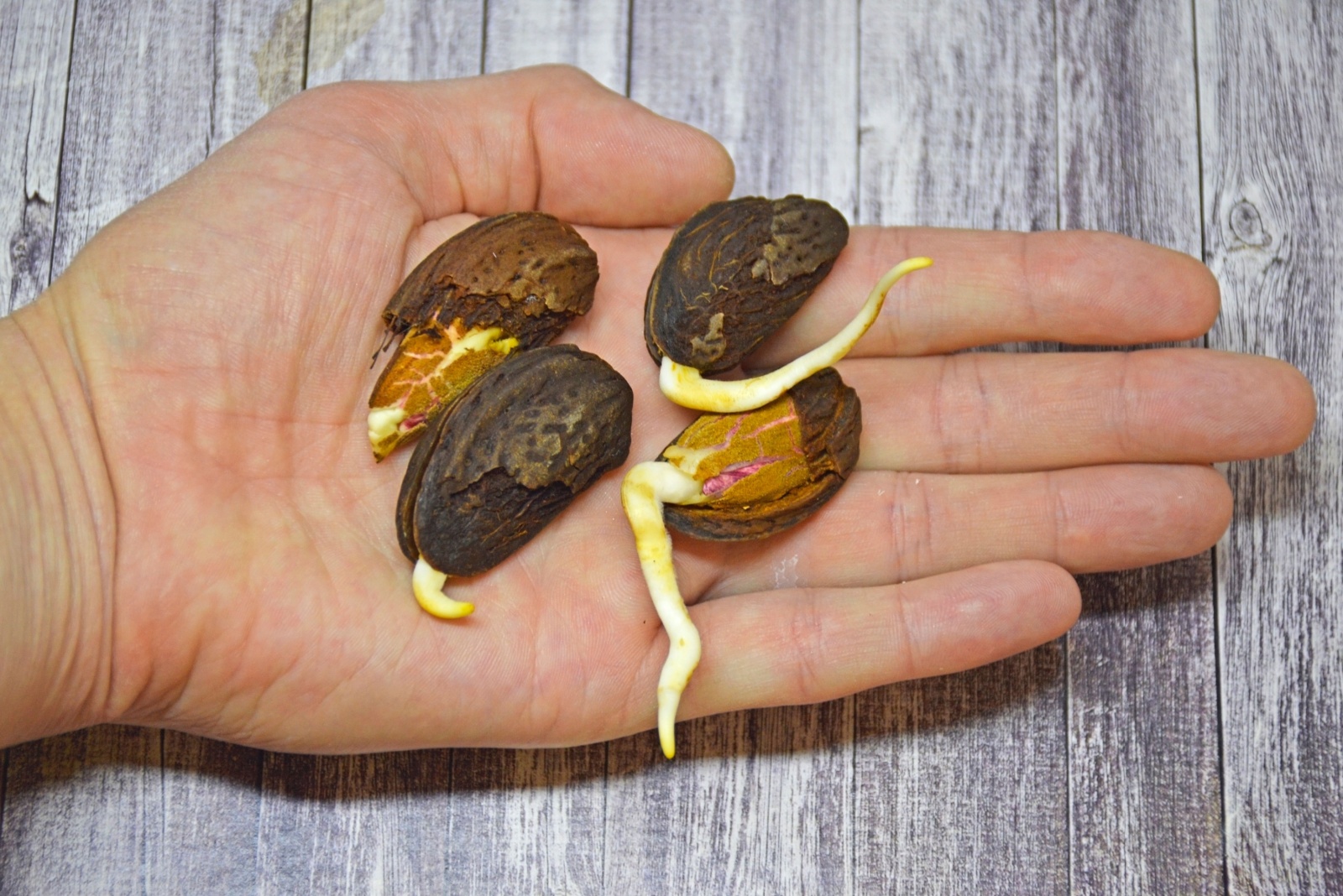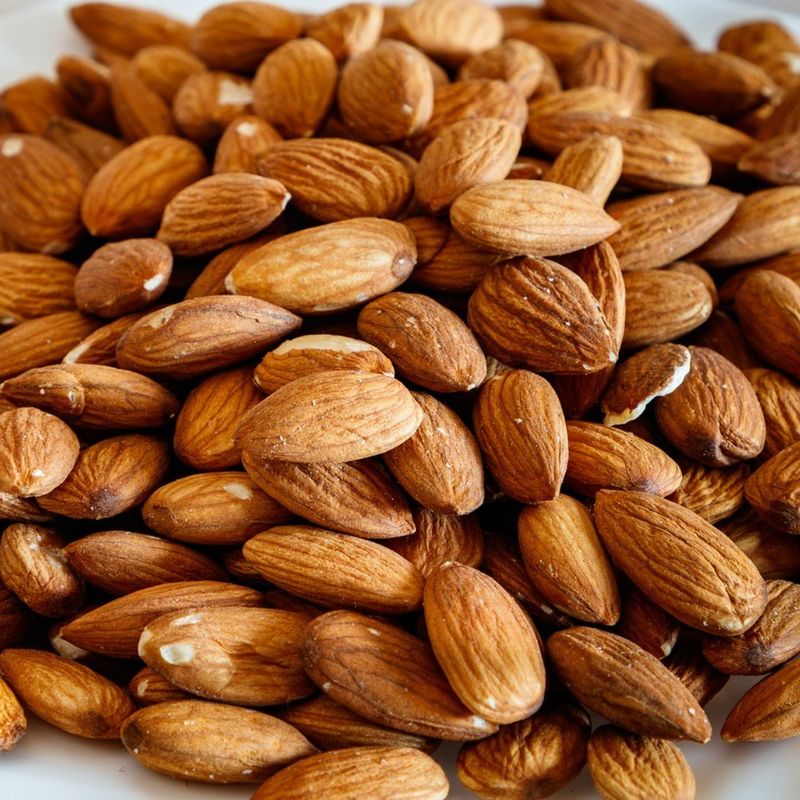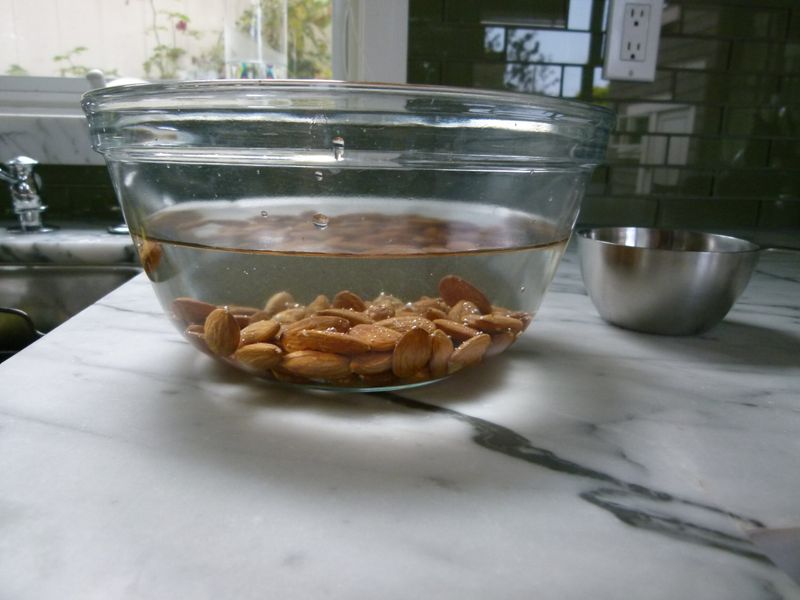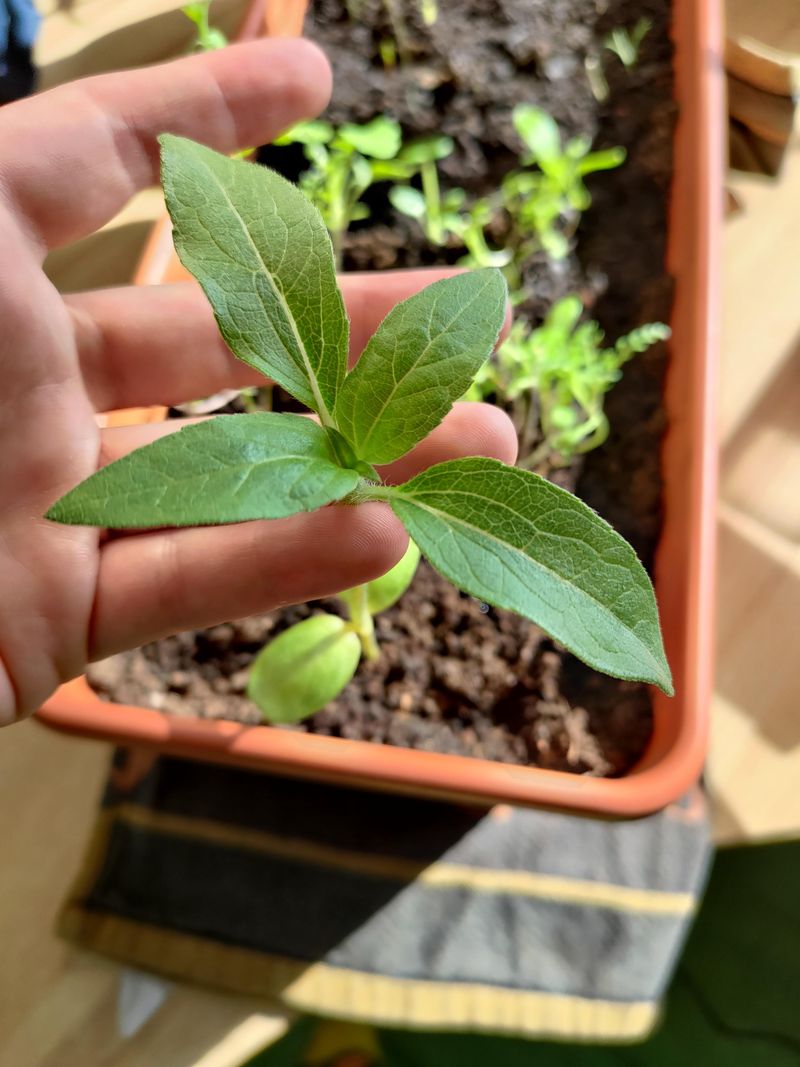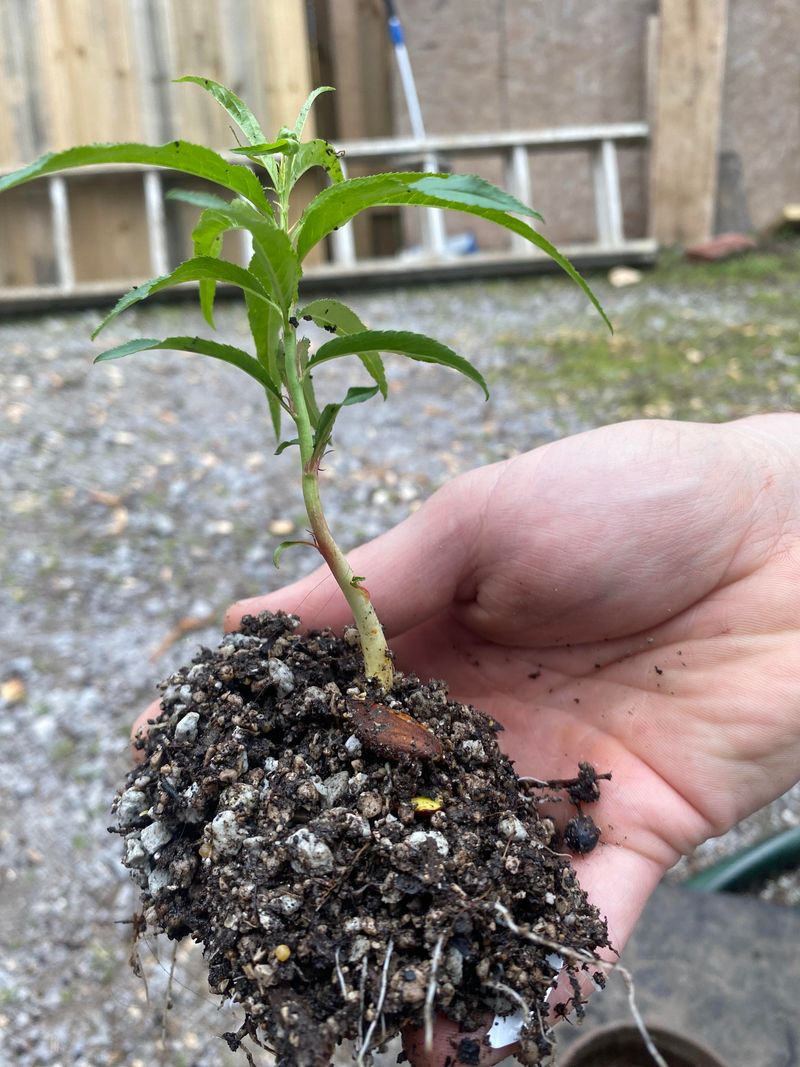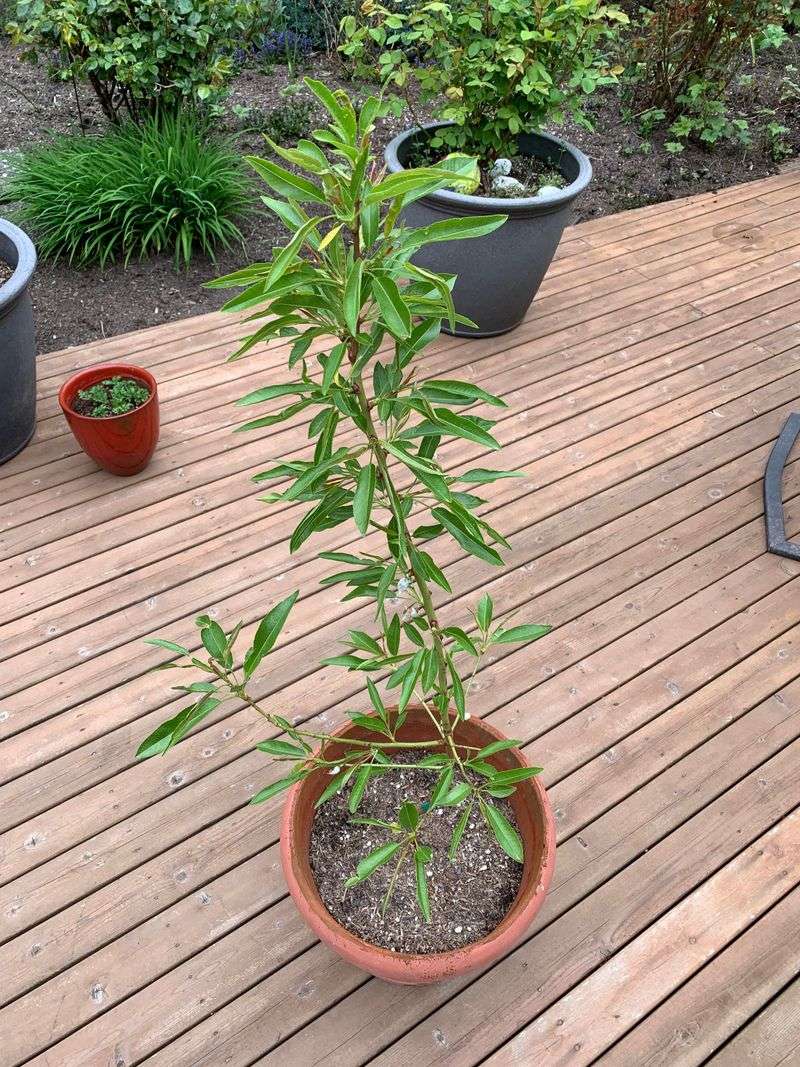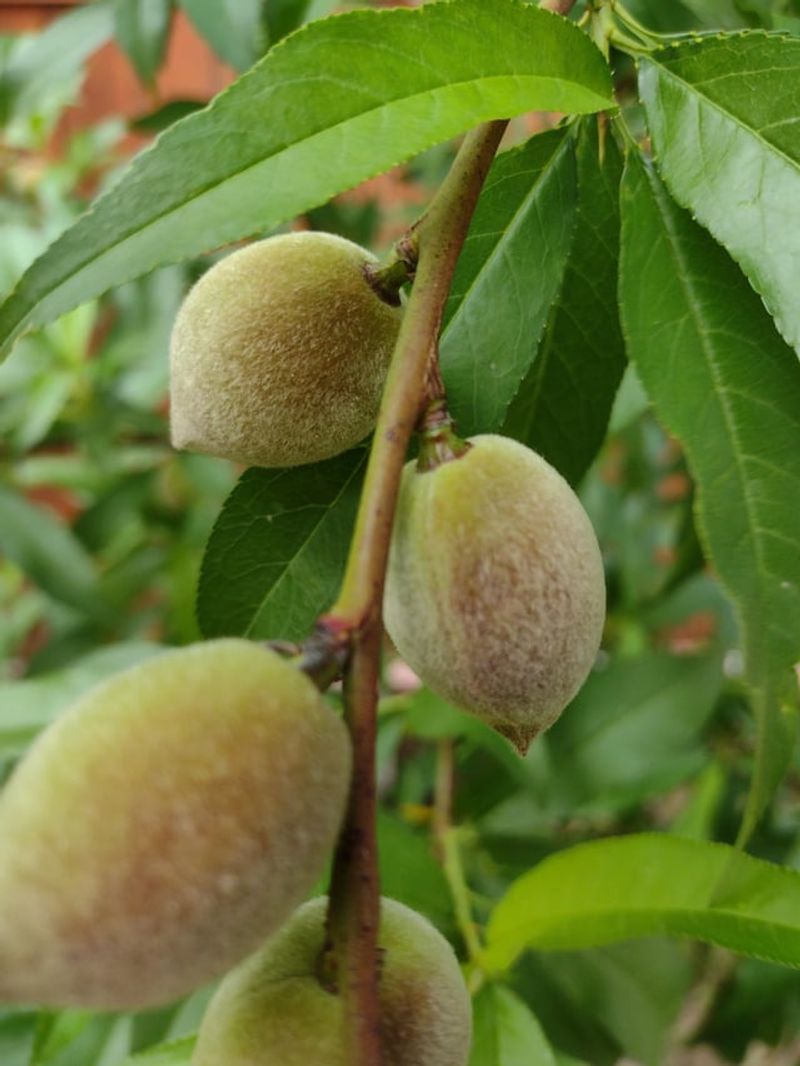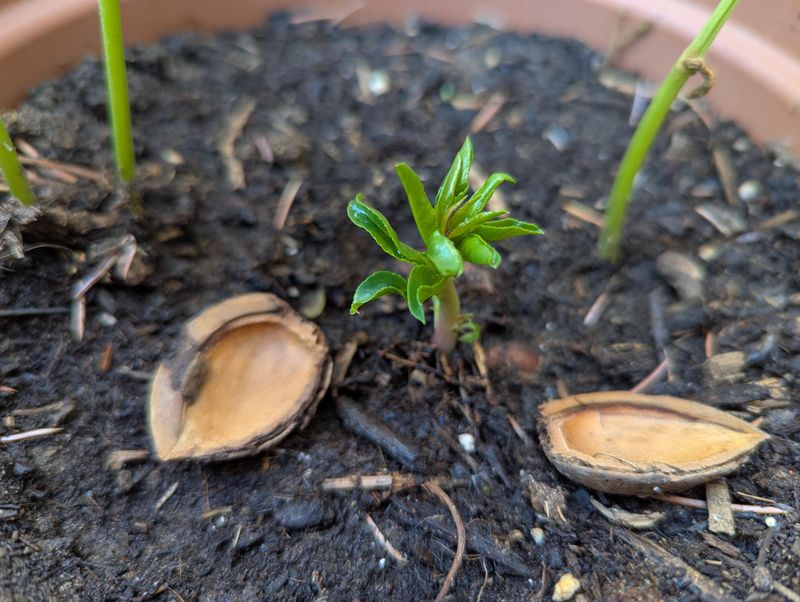A bowl of raw seeds once looked ordinary to me, but I soon realized those small shells hold the start of a real, living tree.
I cracked a few open, felt the kernels inside, and a thought struck me: I could raise my own from scratch.
The idea sounded bold, yet the steps proved simple once I gave it a try.
A seed that seems unremarkable at first glance holds the power to sprout, root, and rise toward the light with steady determination.
I watched the first signs of life appear and felt a spark of pride that no store-bought sapling ever gave me.
Choose The Right Almond Seeds
Not all almonds you grab from the grocery store will sprout into healthy trees.
Most store-bought almonds are roasted or processed, which means they won’t grow no matter how much you try.
You need raw, untreated almonds still in their shells for the best chance of success.
Look for organic almonds labeled as raw or buy seeds specifically meant for planting from a garden center.
Fresh seeds have a much higher germination rate.
If you can find sweet almond varieties, those tend to do better in home gardens than bitter types.
Once you’ve got your seeds, inspect them carefully.
Toss out any that look cracked, moldy, or damaged.
Healthy seeds are smooth and firm to the touch.
Starting with quality seeds sets the foundation for a strong, productive tree down the road.
Soak Your Seeds Before Planting
Almond seeds have a tough outer shell that can make sprouting a slow process.
Soaking them in water for about 8 to 12 hours softens that shell and kickstarts the germination process.
It’s like giving your seeds a head start before they even touch the soil.
Fill a bowl with lukewarm water and drop your seeds in.
Let them sit overnight, but don’t leave them longer than 24 hours or they might start to rot.
You’ll notice the shells might crack slightly or the seeds will swell a bit, which is a good sign.
After soaking, drain the water and pat the seeds dry with a towel.
Now they’re primed and ready to be planted.
This simple step can make a huge difference in how quickly and successfully your almonds sprout into seedlings.
Use Well-Draining Soil Mix
Almond trees absolutely hate sitting in soggy soil.
Their roots need oxygen, and waterlogged dirt suffocates them, leading to root rot and unhealthy growth.
That’s why choosing the right soil mix is super important from the very start.
Go for a blend that drains quickly but still holds a bit of moisture.
A mix of potting soil, sand, and perlite works great.
You can also add some compost to give your seedlings a nutrient boost as they grow.
When you plant your seeds, make sure your pots or planting area have drainage holes at the bottom.
Test the soil by watering it lightly.
If water pools on top instead of soaking in, add more sand or perlite.
Proper drainage keeps roots healthy and strong as your almond tree develops.
Plant Seeds At The Right Depth
Planting depth matters more than you might think.
Too shallow, and the seed dries out before it can sprout.
Too deep, and the tiny seedling won’t have enough energy to push through all that soil to reach sunlight.
A good rule of thumb is to plant your almond seed about one to two inches deep.
Make a small hole with your finger, drop the seed in, and cover it gently with soil.
Don’t pack the soil down too hard, as the sprout needs to break through easily.
If you’re planting multiple seeds, space them at least a few inches apart so their roots don’t compete for nutrients.
Water the soil lightly after planting to settle everything in.
Within a few weeks, if conditions are right, you should start seeing little green shoots poking through the surface.
Provide Plenty Of Sunlight
Almond trees are sun lovers through and through.
In their natural habitat, they bask in full sunlight for hours every day, and your home-grown tree will need the same treatment to thrive.
Without enough light, your seedling will grow weak and leggy, struggling to produce healthy leaves.
Place your pot or planting area in a spot that gets at least six to eight hours of direct sunlight daily.
A south-facing window works well if you’re starting indoors, but moving the seedling outside once it’s strong enough is even better.
If you live somewhere with limited sun, consider using a grow light to supplement natural light.
Watch your plant closely.
If the leaves start turning pale or the stem stretches too much, it’s a sign it needs more light.
Healthy almond trees grow sturdy and green when they get their daily dose of sunshine.
Water Consistently But Don’t Overdo It
Finding the right watering balance can feel tricky at first, but almond trees prefer their soil slightly moist, not drenched.
Overwatering is one of the quickest ways to harm your young tree, causing root problems and stunted growth.
Check the soil regularly by sticking your finger about an inch deep.
If it feels dry, it’s time to water.
If it’s still damp, hold off for another day or two.
During hot weather, you might need to water more often, while cooler months require less.
Always water at the base of the plant, avoiding the leaves.
This keeps moisture where it’s needed and prevents fungal issues.
A good soak that reaches the roots is better than frequent shallow watering.
As your tree matures, it’ll become more drought-tolerant, but young seedlings need consistent care to establish strong roots.
Keep The Temperature Warm And Stable
Almond trees come from warm Mediterranean climates, so they’re not fans of freezing temperatures or sudden cold snaps.
Your seedling needs warmth to germinate and grow, especially in those early weeks when it’s most vulnerable.
Aim to keep your seeds and young plants in an environment between 60 to 75 degrees Fahrenheit.
If you’re starting seeds indoors during winter, a warm spot near a heater or on top of the fridge can help.
Just avoid placing them directly against hot surfaces.
Once your seedling is a few months old and the weather warms up, you can gradually introduce it to outdoor conditions.
Start by placing it outside for a few hours each day, slowly increasing the time.
This process, called hardening off, helps your tree adjust without shocking it.
Stable warmth leads to steady, healthy growth.
Fertilize Lightly As It Grows
Young almond trees don’t need heavy feeding right away, but a little boost of nutrients can help them grow stronger and faster.
Too much fertilizer, though, can burn tender roots and do more harm than good, so go easy at first.
Wait until your seedling has a few sets of true leaves before introducing any fertilizer.
Use a balanced, diluted liquid fertilizer about once a month during the growing season.
Organic options like compost tea or fish emulsion work wonderfully and are gentle on young plants.
As your tree matures, you can increase feeding slightly, especially during spring and summer when growth is most active.
Avoid fertilizing in late fall or winter when the tree is resting.
Pay attention to leaf color.
Dark green, healthy leaves mean your tree is getting what it needs.
Yellowing leaves might signal a nutrient deficiency.
Be Patient And Watch For Growth
Growing an almond tree from seed is not an overnight project.
It takes time, sometimes several weeks, just for the seed to sprout.
Even after it does, growth can feel slow at first as the plant focuses energy on building a strong root system underground.
Don’t get discouraged if progress seems sluggish.
Keep up with watering, light, and care, and trust the process.
Some seeds might not sprout at all, and that’s okay.
It’s a natural part of gardening.
If one doesn’t make it, try again with another seed.
Once your seedling is established, growth will pick up.
You’ll start seeing new leaves and stronger stems.
Celebrate those small wins.
In a few years, with continued care, your little seedling could grow into a mature tree that produces beautiful blossoms and delicious almonds.
Patience really does pay off in the garden.

